PRIMITIVE ACCUMULATION OF CAPITAL
A $10 billion battle is brewing over ownership rights to a 300-year-old sunken warship believed to hold the biggest maritime treasure ever
Erin Snodgrass
Updated Wed, November 8, 2023 at 4:58 AM MST·4 min read
215
A US salvage company is suing Colombia for half of a shipwreck's estimated $20 billion treasure.
The company says it was the first to find debris from the San José, which sank in 1708.
The Colombian government disputes the company's claims and says the treasure is a national heritage.
A sunken Spanish warship that lay undiscovered at the bottom of the ocean for nearly three centuries is spurring a modern-day legal battle over who has the rights to its antique treasures worth billions of dollars.
The San José galleon, which sank off the coast of Cartagena, Colombia, in 1708, contained "the biggest treasure in the history of humanity," an October legal filing from the government of Colombia said.
Now, more than 300 years after the San José went down, a US salvage company is suing the Colombian government for half the ship's treasures, saying it discovered the wreck first in 1981.
When the San José sank in a battle against the British in 1708, the ship was carrying what is believed to be the most expensive cargo ever shipped from the New World, including more than 7 million pesos, 116 steel chests full of emeralds, and 30 million gold coins, according to court documents.
Most of the ship's Spain-bound treasures were taken from Colombian and Peruvian mines using slave labor, NBC's "Today" reported.
Court cases over the years estimated the treasure was worth anywhere from $4 billion to $20 billion, Bloomberg reported.
Current litigation over the ship stems from the US salvage company Sea Search Armada's claim that it found debris from the San José wreck first in 1981 during an exploratory exhibition searching for "shipwrecked species" and other treasures in Caribbean waters.
Sea Search Armada — previously known as Glocca Morra — says it handed over the coordinates of the discovered debris to the Colombian government under an agreement that it would receive half the ship's treasure, according to the company's December 2022 notice of arbitration.
But the Colombian government disputed many of Sea Search Armada's claims in an October response, including the notion that the San José was even at the coordinates handed over by the company.
A 1994 report from the Colombian government said no shipwreck was found at or near the coordinates included in Glocca Morra's initial 1982 report on the exhibition, according to Colombian legal filings in the case.

Gold coins found in the San Jose shipwreck.ARMADA DE COLOMBIA
Glocca Morra never even explicitly reported the finding of the San José in its 1982 report, which makes no mention of the ship by name, the Colombian government alleges. In its notice of arbitration, Sea Search Armada said the report referenced the discovery of a "large shipwreck."
"How can it be explained that a private company finds the biggest treasure in the history of humanity and fails to report it?" attorneys for the government wrote in the October response. "The answer is simple: because it did not find it."
In 2015, President Juan Manuel Santos said the real San José shipwreck had finally been discovered but declined to make the coordinates public, saying they were a state secret.
Colombia has since said the ship and its treasures are a national heritage item and should be kept in the country.
Sea Search Armada, meanwhile, alleges the Colombian navy simply discovered parts of the same debris field it first found in 1981.
The company is suing for $10 billion — which it says is equivalent to half the value of the ship's treasures — under the US-Colombia Trade Promotion Agreement.
The case is set to play out in the Permanent Court of Arbitration, an intergovernmental organization dedicated to dispute resolution among international entities. Hearings in the case are scheduled for the coming months, according to a procedural order, and a court tribunal is expected to try to issue a decision by February.
The race to exhume the treasure trove is heating up amid the brewing legal battle. Colombian President Gustavo Petro wanted the ship brought to ground before the end of his term in 2026, the country's minister of culture told Bloomberg this month.
The minister of culture, Juan David Correa, told the outlet that Petro instructed officials to set up a public-private partnership or work with a private firm to get the ship above water as soon as possible.
Photos and videos of the ship show fine china, coins, and cannons littered across the ocean floor where the San José sank.
‘Holy grail of shipwrecks’ to be raised from the deep – along with $20bn of treasure
Martha McHardy
Tue, November 7, 2023
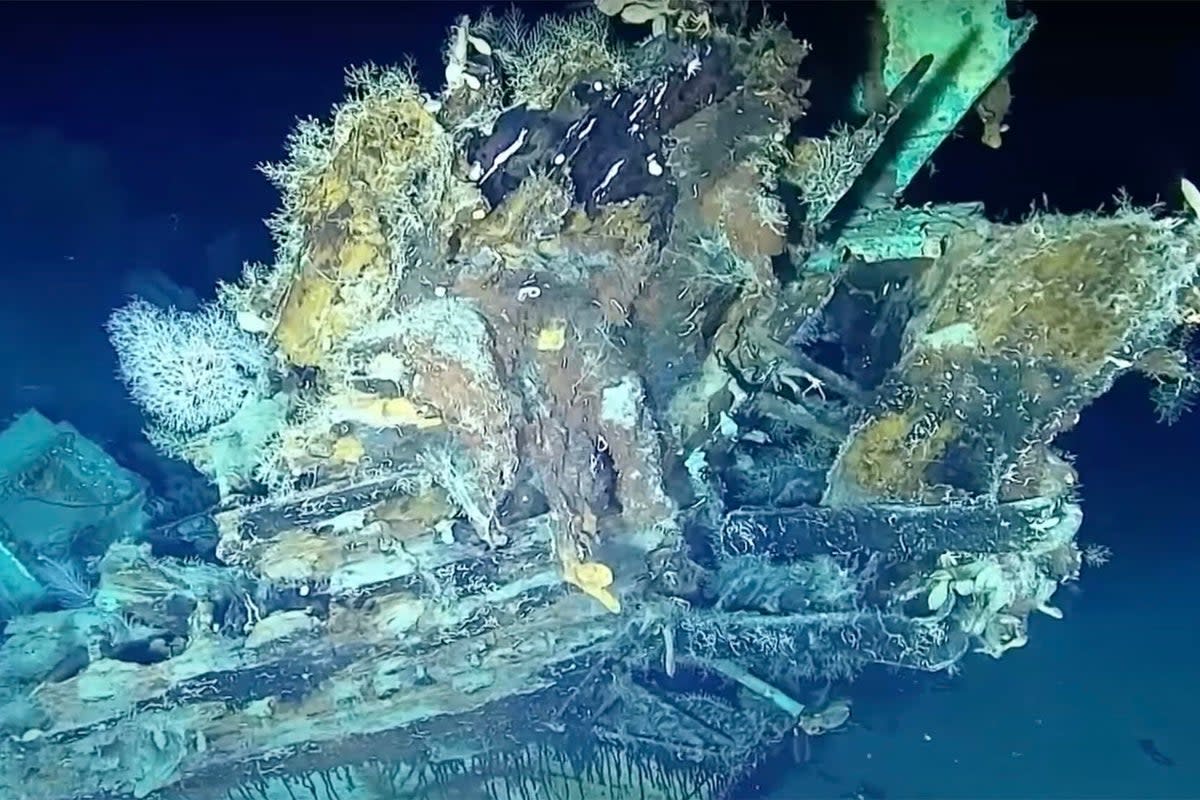
‘Holy grail of shipwrecks’ to be raised from the deep – along with $20bn of treasure
The ‘Holy Grail of shipwrecks’ is set to be recovered from the bottom of the ocean - along with its treasures which are believed to be worth up to $20bn in today’s money.
The Colombian government said the San Jose, which was sunk by the British navy in 1708 off the port of Cartagena, would be recovered as a matter of urgency.
The ship is thought to have sunk with a huge amount of treasure aboard, including 200 tonnes of silver, emeralds and eleven million gold coins.
When the wreck was discovered in November 2015, Colombian President Juan Manuel Santos said the treasure was “the most valuable that has been found in the history of humanity.”
The San Jose was discovered by a team of navy divers in 2015 lying nearly 3,100 feet below the ocean’s surface.
Pictures taken of the wreck by navy divers last year show the wreck is still perfectly preserved, despite lying on the ocean’s floor for more than three centuries.
The Colombian government said the ship will be brought above water before President Gustavo Petro ends his term of office in 2026.

The San Jose was discovered by a team of navy divers in 2015 (Colombian Armada)
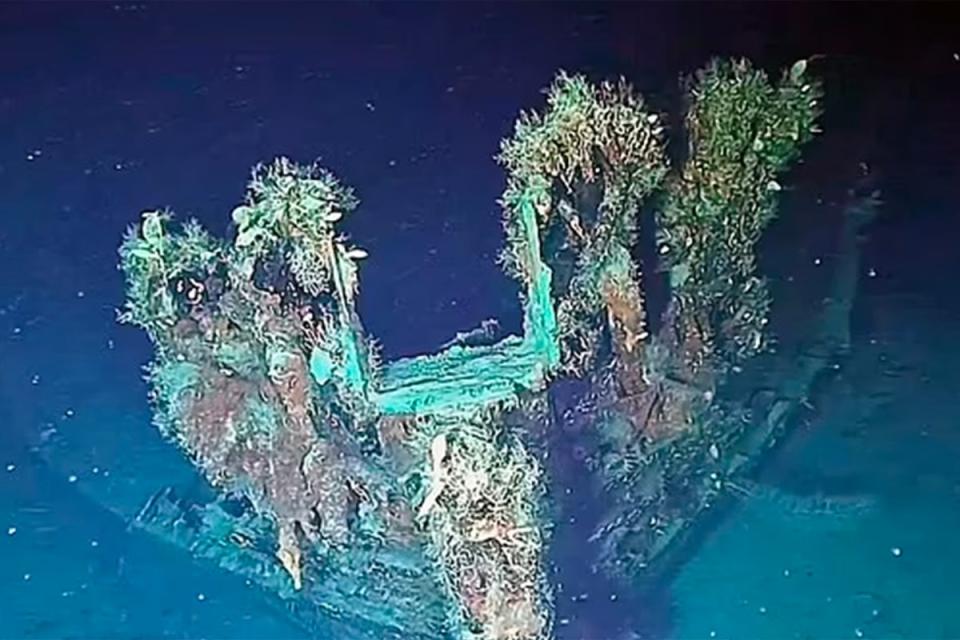
The ship sank along with its treasures which are believed to be worth up to $20billion in today’s money (Colombian Armada)
When the shipwreck is recovered, it is expected that there will be a dispute over who should lay claim to the bounty.
A US salvage consortium called Glocca Morra claimed to have located the San Jose in 1981, but the Colombian government has disputed this, claiming it independently found the galleon with a team of divers in 2015, at a different location, which remains secret.
Glocca Morra has claimed it is owed $10bn by the Colombian government and said it has handed over the coordinates of the shipwreck to the Colombian authorities.
The company are suing the Colombian government for half the treasure, worth $10bn, and the arbitration case is currently being heard in London, according to Bloomberg.

The San Jose galleon was owned by the Spanish crown when it was sunk by the British Navy in 1708 (Colombian Armada)
However, Colombian Minister of Culture Juan David Correa said the government’s team had visited the coordinates given by the company and found no trace of the San Jose.
Spain and Bolivia’s indigenous Qhara Qhara nation also claim ownership over the ship after, they said, the Spanish forced their people to mine the metals used in the treasure.
The 62-gun and three-masted galleon ship sank after it was intercepted by a British squadron on 8 June 1708 off Cartagena, during the War of the Spanish Succession.
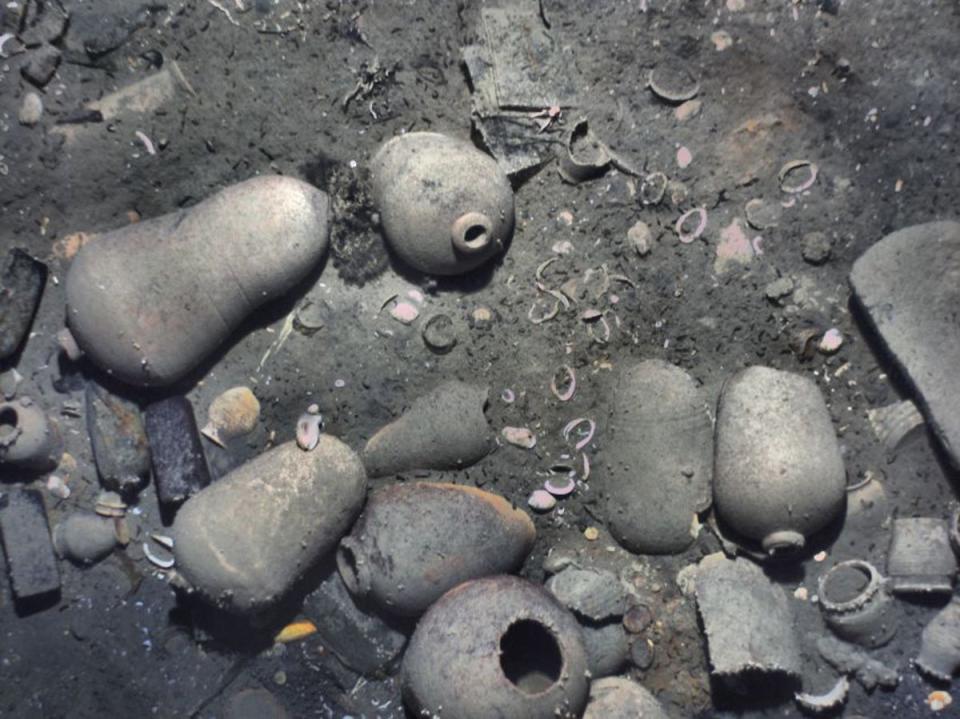
Ceramic jars and other items from the 300-year-old shipwreck of the Spanish galleon San Jose on the floor of the Caribbean Sea off the coast of Colombia (AP)
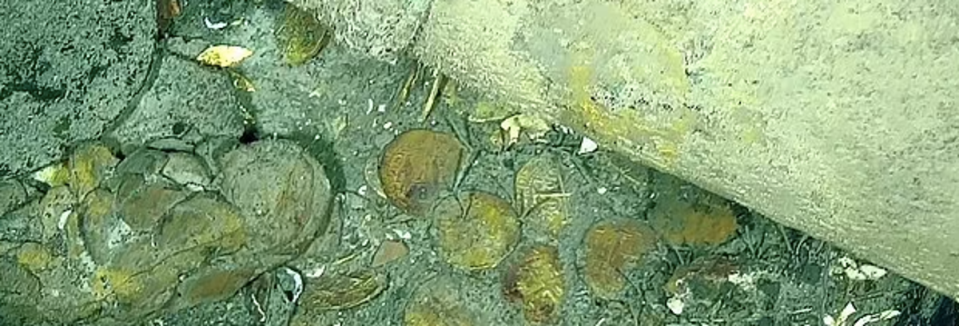
Eleven million gold coins are thought to have been on board (EPA)
There were 600 sailors on board, all but 11 of whom went down with the ship.
When it sank, the San Jose was transporting plundered gold, silver, emeralds and other precious stones and metals from the Americans back to Spain.
Images recovered last year show a part of the bow covered in algae and shellfish, as well as the remains of the frame of the hull.
Treasure aboard the San Jose could also be seen - including gold ingots and coins, muddy cannons made in Seville in 1655 and an intact Chinese dinner service. Porcelain crockery, pottery and glass bottles could also be seen.
Mr Correa told Bloomberg that recovering the ship within the next two years is now a priority for President Petro. “The president has told us to pick up the pace,” he said.
‘Holy Grail’ Shipwreck With $20 Billion Treasure Will Be Raised From the Depths
James Gilboy
Tue, November 7, 2023 a
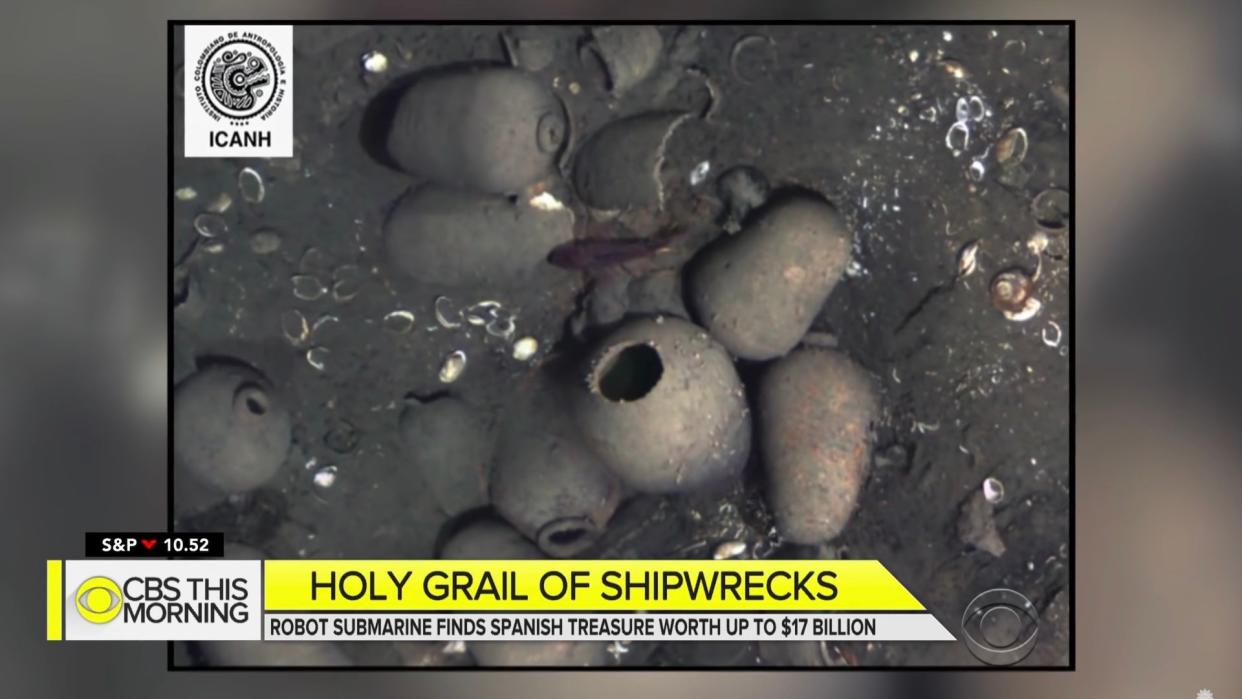
San Jose shipwreck
A 17th-century treasure ship described by many as the "holy grail of shipwrecks" will reportedly be lifted from the sea floor where it has lay for more than 300 years. The ship's cargo of gold, silver, gemstones, and antiques is speculatively valued at up to $20 billion. As the Independent reports, the treasure's ownership is now the subject of a four-way dispute that's in international arbitration.
The San José was a 64-gun, three-mast galleon launched by Spain in 1698. On June 8, 1708, it encountered a British squadron that engaged it off the coast of what's now Colombia along the Caribbean coast of South America. The ship suffered a magazine explosion that sent it—and its cargo of gold, silver, and jewels—to the ocean floor, where it remained lost for more than three centuries. Or maybe not, depending on who you believe.
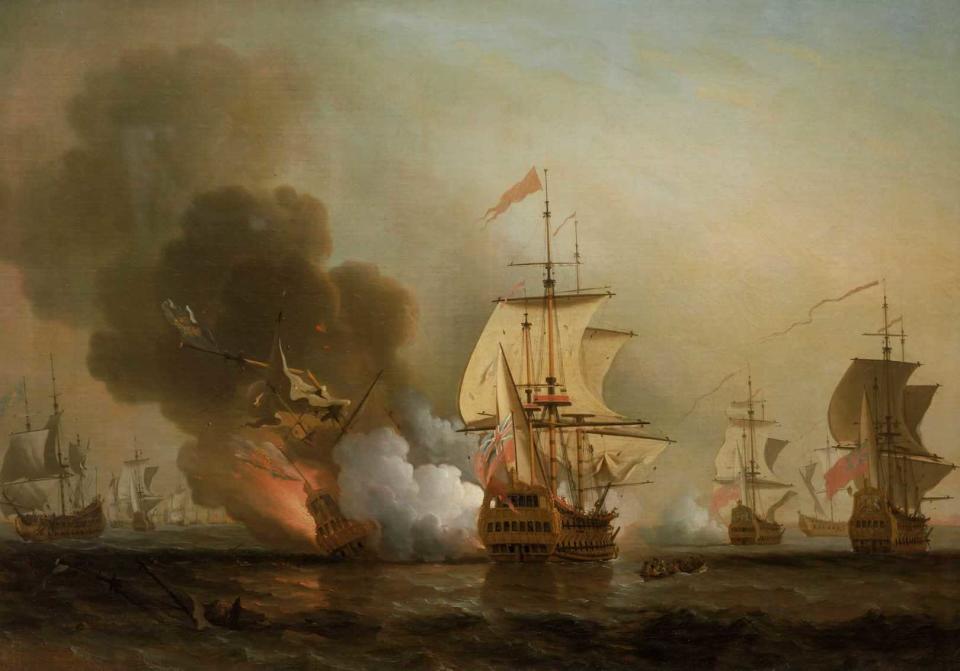
Action off Cartagena, painting by Samuel Scott. Public domain
In December 2015, Colombia declared a team of navy divers had found the San José, footage of which found its way to the news. The well-preserved shipwreck was reportedly found in 3,100 feet of water, with much of its cargo visibly intact.
Artifacts identified in the depths so far include gold ingots, Chinese ceramics and tableware, and the ship's cannons, which were cast in Seville in 1655. Of the most interest of course is the ship's coffers of 11 million gold coins, making up a significant portion of the 200 tons of treasure on board (which also reportedly includes silver and emeralds).
The Colombian government reportedly says it plans to raise the ship by 2026 when the term of its current president ends. However, multiple parties have laid claim to the cargo, one of whom has brought Colombia to arbitration in London.
https://www.youtube.com/watch?v=suF85DI2Pco
Vanity Fair reports that a group of U.S. investors operating as Glocca Morra, later Sea Search Armada, claim to have signed a salvage contract entitling them to half the ship's cargo in 1979. The group alleges it found the San José in 1981 at a depth of around 660 feet, and provided Colombia officials with coordinates. Colombia disputes this, claiming the shipwreck was not found at the coordinates provided.
Spain, which originally owned the vessel and its forcefully extracted cargo on board, has also reportedly tried to claim the bounty. Bolivia's Qhara Qhara indigenous group has also raised its hand, due to its ancestors reportedly being forced to mine the valuable metals and gems in the first place.
No comments:
Post a Comment